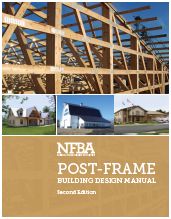Welcome to Ask the Pole Barn Guru – where you can ask questions about building topics, with answers posted on Mondays. With many questions to answer, please be patient to watch for yours to come up on a future Monday segment. If you want a quick answer, please be sure to answer with a “reply-able” email address.
Email all questions to: PoleBarnGuru@HansenPoleBuildings.com
 DEAR POLE BARN GURU: Hello, we have a problem with our sliding barn doors hanging up on the siding and getting froze into the ice/snow or stuck in mud. Is there any reason to not relocate them inside the barn? Our barn has a concrete floor but the outside approach is dirt and grass. Moving the track and (2) doors inside would prevent snow and mud from interfering with opening and seems to be a win win. We have just never seen this done before. Thanks for your time! BRANDONN IN MUSKEGON
DEAR POLE BARN GURU: Hello, we have a problem with our sliding barn doors hanging up on the siding and getting froze into the ice/snow or stuck in mud. Is there any reason to not relocate them inside the barn? Our barn has a concrete floor but the outside approach is dirt and grass. Moving the track and (2) doors inside would prevent snow and mud from interfering with opening and seems to be a win win. We have just never seen this done before. Thanks for your time! BRANDONN IN MUSKEGON
DEAR BRANDONN: Your situation is a prime example of why I try to discourage the use of sliding doors in snow country. In most instances sectional overhead doors are a much better design solution.
Most clients with sliding doors do not want to mount them on the inside because they do not want to sacrifice the wall space. Nothing can be hung or placed against the interior of the wall in the direction the door (or doors) slide.
In many instances exterior sliding doors can be taller than interior sliding doors, as the interior doors must hang below the bottom chord of the trusses. This may be an issue in your case.
As far as relocating – if it was my own building I would want to re-side this wall, to eliminate the slot in the siding where the track board currently resides. Most of the balance of the expense (or time) will come from labor. But yes, you can move them, with the above considerations in mind.
Mike the Pole Barn Guru
DEAR POLE BARN GURU: How much a square foot for a horse area that is 50’wx128’Lx14′ eave height, metal painted siding and white metal roof with an 8×10, 10×10 and 12×16 roll up metal insulated doors with 2 man doors, 8-4’x6′ sliding double pane windows, and an 8×8 tack room? JOHN IN GARDEN CITY
DEAR JOHN: Thank you very much for your interest in a new Hansen Pole Building. While we appreciate you having worked out so many of the dimensional details, as well as doors and windows, it is always best to discuss your exact building needs with one of our Building Designers at (866)200-9657. Every quote is free, and your Building Designer will contact you as much – or as little as you wish.
Your request for a tack room leads me to believe some portion of this building may eventually have some stalls in it. If so, we can perhaps make some suggestions as to size and locations which would give you the most bang for your investment.
I always encourage horse enthusiasts to read through some of the most relevant articles on equestrian facilities, prior to getting ideas “set in stone”.
Here are a few:
Arenas: https://www.hansenpolebuildings.com/2012/07/the-perfect-indoor-riding-arena/
Stalls: https://www.hansenpolebuildings.com/2011/12/horse-stalls/
Aisleways: https://www.hansenpolebuildings.com/2011/12/horse-aisleway/
Ventilation: https://www.hansenpolebuildings.com/2012/11/horse-barn-ventilation/
Mike the Pole Barn Guru
DEAR POLE BARN GURU: Could you tell me how tall are the side walls on project 04-0509 please? If I wanted to build a combo workshop and home, a home with two floors, how tall of a side wall do you recommend? If I got a quote from you for 16′ tall building, 60 x 40. How much of a difference is it to change it to 18′ side walls. Or can I get two floors for my house out of a sixteen footer? Please advise. Thank you. PAUL IN MECHANICSBURG
DEAR PAUL: The walls on Project 04-0509 are 18 feet tall, which is the bare minimum needed to get two full eight foot tall ceilings. You need to account for the thickness of a nominal four inch thick concrete slab, the thickness of the floor system (usually around a foot) and the thickness of the roof system (always at least six inches). In order to get the full thickness of attic insulation from wall to wall, I recommend using raised heel trusses (read more here: https://www.hansenpolebuildings.com/blog/2012/07/raised-heel-trusses/), which means you will generally need to add yet another foot to the eave height.
Keep in mind – fire separation requirements between mixed uses (shop and living areas), which will entail a minimum of one-hour fire resistance.
Mike the Pole Barn Guru
DEAR POLE BARN GURU: How much does a pole barn materials weigh? 30×40 x12 DONALD IN LIBERTY
DEAR DONALD: Obviously the features of any given building will change the weight. For the dimensions you have mentioned, with average features, expect it to weigh in at about 8,000 pounds.
Mike the Pole Barn Guru








